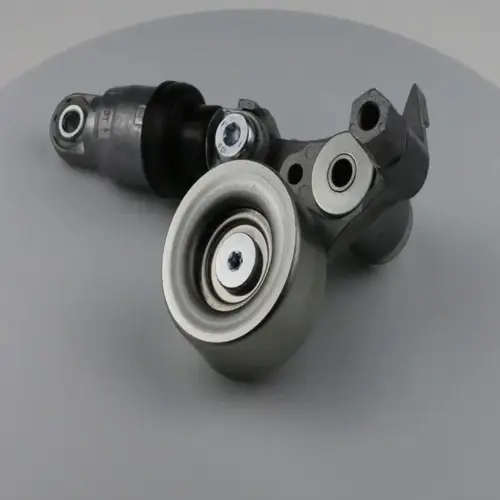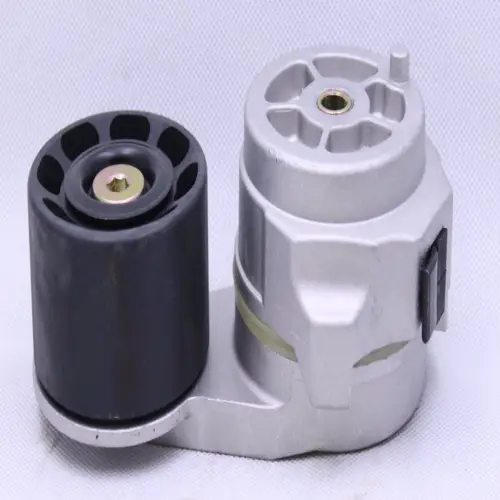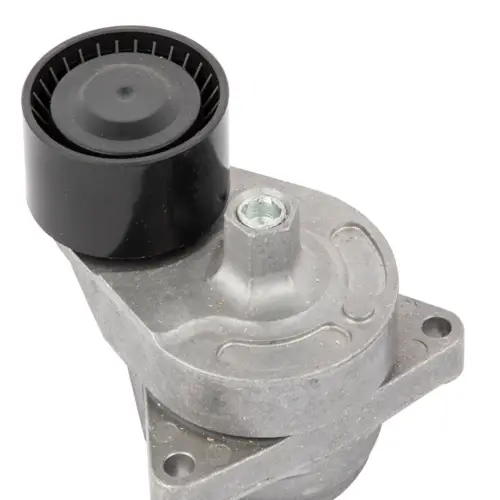Product Description
Product Description
| OuChai NO. | Oem NO. | Application | Size |
| OCT-T9030 | 320/08628 | JCB | 70*30 |
1. We are a professional manufactory product belt tensioner for truck and passenger car.
2. Advantage:
1)Reliable and durable, Strict quality control.
2))FOB\CIF\C&F price.
3)Small MOQ.
4)Specialized in belt tensioner.
5)Wholesale for auto truck parts.
6)Supply package.
3. Packing:
1) OUCHAI packing
2) Neutral packing
3) customer request
4. Shipping:
1. By sea, DHL, FedEx, ect.
2. Within 15 days after receiving 30% deposit
Certifications
Company Profile
HangZhou OUCHAI TECHNOLOGY CO.,LTD is located in Kunyang Nailali Industrial Zone, Xihu (West Lake) Dis., HangZhou. Our factory is a professional manufacturer of producing belt tensioner with designing and selling.
Our company was founded in 2014, with RMB 3 million registered capital, and covers an area 2000 square meters. There are 30 workers in our factory, including 2 engineers and 6 technicians.
Our company fully implement IATF16949 quality management system and own the advanced production equipment, such as CNC lathe, punching machine, die-casting machine, assembly line and testing equipment.
Our products mainly exported to European, America and South East, and deeply praised by customers. We always adhere to the principle of “integrity is foundation, quality is first, CZPT cooperation” and we’ll move forward all the way.
Detailed Photos
/* October 22, 2571 15:47:17 */(()=>{function d(e,r){var a,o={};try{e&&e.split(“,”).forEach(function(e,t){e&&(a=e.match(/(.*?):(.*)$/))&&1

How do V-belt tensioners enhance the overall efficiency and lifespan of V-belts in various applications?
V-belt tensioners play a crucial role in enhancing the overall efficiency and lifespan of V-belts in various applications. These tensioners are specifically designed to maintain proper belt tension, which directly affects the performance, reliability, and longevity of the V-belt system. Here’s a detailed explanation of how V-belt tensioners enhance the overall efficiency and lifespan of V-belts:
- Optimal Tension:
- Consistent Tension:
- Reduced Wear and Fatigue:
- Load Distribution:
- Shock and Vibration Absorption:
- Alignment and Stability:
V-belts operate most efficiently when they are properly tensioned. Over-tensioning or under-tensioning can lead to issues such as belt slippage, reduced power transmission, increased wear, and premature failure. V-belt tensioners ensure that the belts are maintained at the correct tension, allowing for optimal power transmission and minimizing energy losses. By preventing excessive belt slippage or tension loss, tensioners contribute to the overall efficiency of the V-belt system.
V-belt tensioners help maintain consistent tension in the belts, even in applications where load conditions or environmental factors vary. As the belts stretch or wear over time, the tensioners compensate for these changes by adjusting the tension accordingly. Consistent tension ensures that the belts stay properly engaged with the pulleys, reducing the risk of slippage and maintaining reliable power transmission. By minimizing fluctuations in tension, tensioners improve the efficiency and lifespan of V-belts.
Proper tensioning provided by V-belt tensioners helps reduce wear and fatigue in the belts. When the belts are under-tensioned, they can slip, causing increased friction and wear on the belt surfaces and pulleys. On the other hand, over-tensioning can lead to excessive stress on the belts, resulting in accelerated fatigue and potential belt failure. By maintaining the optimal tension, tensioners minimize wear and fatigue, prolonging the lifespan of the V-belts and reducing the need for frequent replacements.
V-belt tensioners aid in the proper distribution of loads across the V-belt system. They help evenly distribute the tension and load forces among multiple belts, ensuring that each belt shares the workload proportionally. This prevents individual belts from bearing excessive loads, which can cause premature wear and failure. By promoting load distribution, tensioners enhance the overall efficiency and lifespan of V-belts in applications with high power requirements or varying load conditions.
Many V-belt tensioners incorporate features that help absorb shocks and vibrations within the belt system. Applications with heavy machinery or dynamic loads often experience sudden load changes, shocks, or vibrations that can impact the belts’ performance. Tensioners with built-in damping mechanisms or shock absorbers help absorb these dynamic forces, protecting the belts from excessive stress and reducing the risk of damage or premature failure. By minimizing the impact of shocks and vibrations, tensioners contribute to the overall efficiency and lifespan of V-belts.
Proper belt alignment and stability are essential for efficient power transmission and extended belt life. V-belt tensioners aid in maintaining proper belt alignment by applying consistent tension across the belts. They also help stabilize the belts, keeping them centered on the pulleys and preventing lateral movement. By ensuring proper alignment and stability, tensioners minimize belt wear, reduce the risk of misalignment-related issues, and enhance the overall efficiency and lifespan of V-belts.
In summary, V-belt tensioners enhance the overall efficiency and lifespan of V-belts in various applications by maintaining optimal tension, ensuring consistent tension, reducing wear and fatigue, promoting load distribution, absorbing shocks and vibrations, and aiding in alignment and stability. By providing these benefits, tensioners optimize power transmission, minimize energy losses, extend belt life, and reduce the need for frequent replacements. Proper selection and installation of V-belt tensioners are crucial to maximizing the efficiency and longevity of V-belts in diverse industrial and mechanical systems.

How do V-belt tensioners contribute to reducing wear and increasing the efficiency of power transmission?
V-belt tensioners play a critical role in reducing wear and increasing the efficiency of power transmission in V-belt systems. They help maintain proper belt tension, ensuring optimal grip between the belt and pulleys. Here’s a detailed explanation of how V-belt tensioners contribute to reducing wear and increasing power transmission efficiency:
- Maintaining Proper Belt Tension:
- Optimizing Belt Grip:
- Reducing Belt Slippage:
- Promoting Even Load Distribution:
- Minimizing Belt Vibrations:
V-belt tensioners are designed to apply and maintain the correct tension in V-belt systems. When the tension is too loose, the belt can slip on the pulleys, leading to increased wear on the belt and reduced power transmission efficiency. Conversely, when the tension is too tight, excessive stress is placed on the belt and other system components, resulting in accelerated wear. V-belt tensioners ensure the optimal tension level, preventing slippage and excessive stress, and minimizing wear.
Proper tensioning of V-belts ensures optimal grip between the belt and pulleys. The tensioner maintains the desired tension, which allows the belt to effectively engage the pulley grooves. This optimal grip ensures efficient power transmission, as the friction between the belt and pulleys enables the transfer of rotational force. By maximizing belt grip, V-belt tensioners minimize power losses due to slippage, enhancing the overall efficiency of power transmission.
One of the main causes of wear in V-belt systems is belt slippage. Slippage occurs when the belt loses traction with the pulleys, resulting in a loss of power transmission efficiency and increased wear on the belt. V-belt tensioners help prevent slippage by maintaining the proper tension, which ensures that the belt remains securely engaged with the pulleys. By reducing belt slippage, V-belt tensioners minimize wear on the belt and other components, improving the overall system efficiency.
Proper tensioning of V-belts helps promote even load distribution across the belt and pulleys. When the tension is correctly set, the load is evenly distributed along the width of the belt, minimizing localized stress points. This even load distribution reduces wear on specific areas of the belt, prolonging its lifespan. Additionally, by evenly distributing the load, V-belt tensioners help prevent premature wear on the pulleys and other components, contributing to increased system efficiency.
Improperly tensioned V-belts can induce vibrations during operation, leading to increased wear and reduced power transmission efficiency. V-belt tensioners help minimize belt vibrations by maintaining the correct tension, ensuring a stable and secure operation. By reducing belt vibrations, V-belt tensioners contribute to decreased wear on the belt and other system components, improving power transmission efficiency.
In summary, V-belt tensioners contribute to reducing wear and increasing power transmission efficiency by maintaining proper belt tension, optimizing belt grip, reducing belt slippage, promoting even load distribution, and minimizing belt vibrations. These factors collectively ensure efficient power transfer, reduce wear on the belt and other system components, and enhance the overall performance and longevity of V-belt systems.

What is a V-belt tensioner, and how does it contribute to the performance of V-belt systems?
A V-belt tensioner is a mechanical component used in V-belt systems to maintain proper tension in the V-belt. It plays a crucial role in ensuring optimal performance and functionality of V-belt systems. Here’s a detailed explanation of what a V-belt tensioner is and how it contributes to the performance of V-belt systems:
- Definition and Function:
- Tension Maintenance:
- Prevention of Slippage:
- Load Handling:
- Reduced Wear and Maintenance:
- System Reliability:
A V-belt tensioner is a device designed to apply and maintain the correct tension in a V-belt. It typically consists of a pulley mounted on a movable arm or spring-loaded mechanism. The tensioner is installed in the V-belt drive system and exerts pressure on the belt to achieve the desired tension. Its primary function is to counteract the natural elongation and slackening of the V-belt over time, ensuring optimal power transmission and preventing slippage between the belt and the pulleys.
The main contribution of a V-belt tensioner is to maintain the proper tension in the V-belt throughout its operational life. Over time, V-belts can stretch and elongate due to factors such as normal wear, temperature changes, or load variations. The tensioner compensates for this elongation by automatically adjusting the tension as needed. It applies force to keep the belt tightly engaged with the pulleys, preventing slackening and maintaining the required tension for efficient power transmission. By ensuring consistent tension, the tensioner minimizes the risk of belt slippage, improves system performance, and extends the lifespan of the V-belt.
Slippage between the V-belt and the pulleys is a common issue in belt drive systems that can result in decreased performance and power transmission efficiency. The V-belt tensioner plays a critical role in preventing slippage. By maintaining the appropriate tension, the tensioner ensures a secure grip between the V-belt and the pulleys, minimizing the risk of slippage under normal operating conditions. This enhanced grip allows for efficient power transfer, accurate timing in timing belt applications, and reliable operation of the V-belt system.
V-belt tensioners also contribute to the effective handling of varying loads in V-belt systems. As loads fluctuate, the tension in the V-belt needs to be adjusted to accommodate the changes. The adjustability feature of V-belt tensioners allows for fine-tuning of the tension, ensuring that the V-belt remains properly tensioned under different load conditions. This flexibility helps optimize power transmission, prevent slippage, and maintain reliable performance, even when the system experiences varying loads.
Proper tension provided by V-belt tensioners helps reduce wear on the V-belt and other system components. Slippage between the V-belt and the pulleys can cause accelerated wear on both the belt and the pulleys. By preventing slippage, tensioners minimize the frictional forces that lead to excessive wear. They distribute the load evenly across the V-belt, reducing localized wear and extending the lifespan of the belt. Additionally, by maintaining optimal tension, V-belt tensioners contribute to reduced maintenance needs, as they help prevent issues such as misalignment, excessive wear, or premature failure that can result from inadequate tension.
V-belt tensioners enhance the overall reliability of V-belt systems. By maintaining the proper tension and preventing slippage, tensioners ensure consistent power transmission and reliable performance. This reduces the risk of unexpected power losses, interruptions in operation, or damage to other system components. V-belt tensioners contribute to the overall reliability and uptime of V-belt systems, enhancing productivity and minimizing costly downtime.
In summary, a V-belt tensioner is a mechanical component that maintains proper tension in V-belt systems. It plays a critical role in preventing slippage, maintaining tension, handling varying loads, reducing wear and maintenance, and enhancing the reliability of V-belt systems. By ensuring optimal tension and preventing slippage, V-belt tensioners contribute to efficient power transmission, extended belt life, and reliable operation in a wide range of applications.


editor by lmc 2024-12-11







